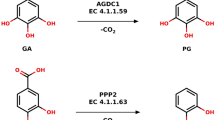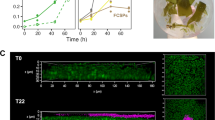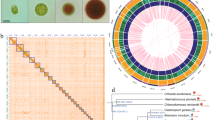Abstract
ANDERSON1 reported that Prototheca zopfii, which is a colourless alga, was able to assimilate most of the monosaccharides, and all the fatty acids with the exception of formic, isovaleric and pyruvic acids. Pyruvate could, however, become assimilated if the pH. were lowered to 4.5, and this also affected the rate of oxidation of the carbon energy source.
This is a preview of subscription content, access via your institution
Access options
Subscribe to this journal
Receive 51 print issues and online access
$199.00 per year
only $3.90 per issue
Buy this article
- Purchase on SpringerLink
- Instant access to full article PDF
Prices may be subject to local taxes which are calculated during checkout
Similar content being viewed by others
References
Anderson, E. H., J. Gen. Physiol., 28, 297 (1945).
Whickerham, L. J., U.S. Dept. Agric. Tech. Bull. No. 1029 (1951).
Author information
Authors and Affiliations
Rights and permissions
About this article
Cite this article
CULLIMORE, D. An Adaptive Butyrase Enzyme System in the Alga Prototheca zopfii. Nature 209, 531 (1966). https://doi.org/10.1038/209531a0
Issue date:
DOI: https://doi.org/10.1038/209531a0



